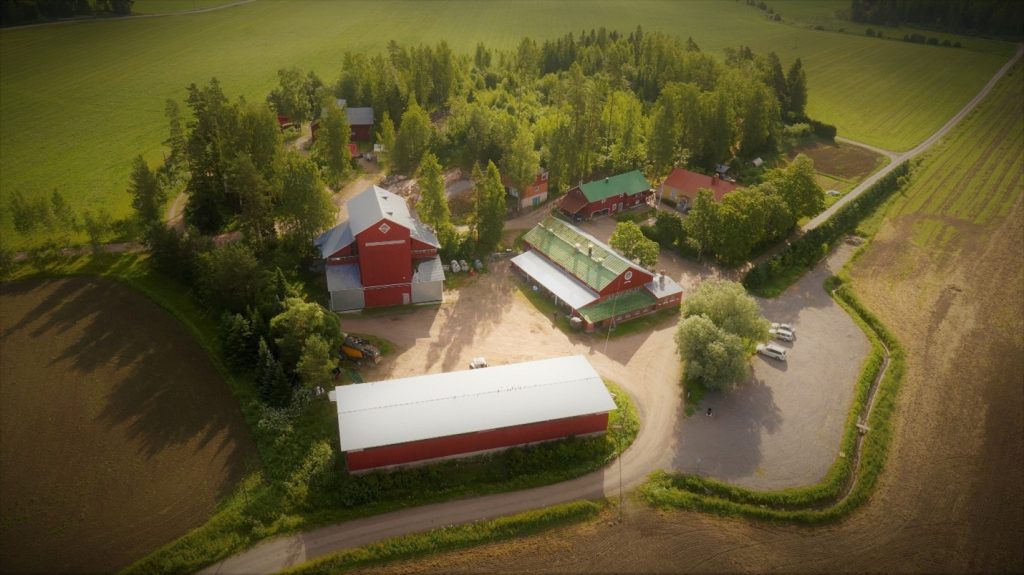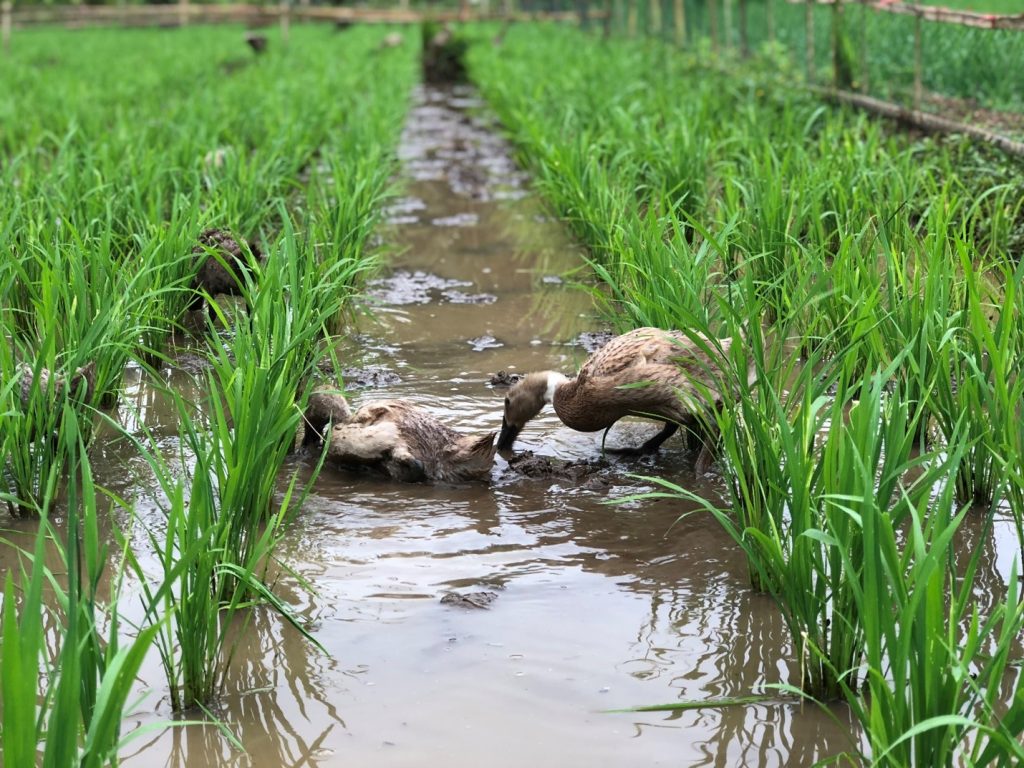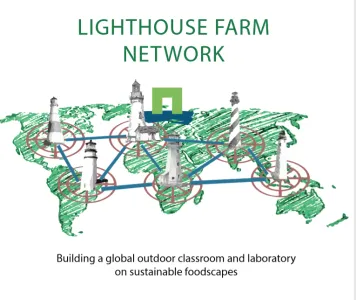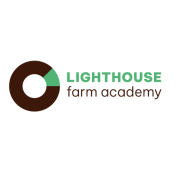Unlocking Sustainable Farming Solutions: Insights from Wageningen’s Lighthouse Farms
In 2017, National Geographic celebrated the Netherlands as an “agricultural giant” that was “changing the way we farm”; notwithstanding its small size, this country was feeding the world and consistently supplied a considerable amount of agricultural products to Europe and the rest of the world.
High efficiency and a high-tech approach to farming and food were to be thanked for these outstanding achievements. The improvement of agricultural systems through incremental change (optimization of fertilizer application, plant breeding, etc.) was still seen not just as a possibility but as the most promising option for sustainably feeding the world. However, the system’s linearity and externality remained invisible in this narrative. The focus on the efficiency of high(er) tech agriculture, with an emphasis on yields per unit of land, obscured the environmental costs of such an intensive system: large quantities of input were being imported from other countries, increasing the carbon footprint of production and moving a huge amount of nutrients across continents.
The whole picture is now apparent in science: the efficiency of agricultural production in the Netherlands is due to large imports of nutrients and biomass from countries like Brazil, as well as fossil energy from the Middle East and cheap material goods from Asia. As recent history showed, “the tiny country that was feeding the world” found itself tackling the highly complex challenge of curbing nitrogen pollution—and the conundrum that this challenge posed: is incremental change enough to fix such disproportionate issues? Studies showed that even with a minimal percentage of losses to the system, a large and intense system would still have unsustainable effects on biodiversity, water quality, and, ultimately, the environment as a whole.
The European project Landmark2020 studied the demands of soil functions in the EU, highlighting the staggering demands facing farmers in the Netherlands compared to the EU average (Figure 1). In 2019, the world watched as Dutch farmers took to the streets, illustrating the tension between providing food security and staying within planetary boundaries. As the recent protests show, much of this pressure to provide food security while staying within planetary boundaries was placed on the shoulders of farmers, who were often already working within tight socio-economic and environmental operating spaces.
 Figure 1 – Societal demand for soil functions per country (vis-a-vis EU average) – (Adapted from Schulte et al., 2019)
Figure 1 – Societal demand for soil functions per country (vis-a-vis EU average) – (Adapted from Schulte et al., 2019)
Since the time of the National Geographic article, disruptions to the linear supply chains (such as COVID-19 and the war in Ukraine) have shown us the fragility of the food system as it is. Farmers feel pressed and not supported by the environmental policy. These shocks and trials, together with the reality of climate change, have highlighted the size of the issues we face in food systems and the inadequacy of the current solution space.
So, how can we carve a path toward a future resilient to predictable and unpredictable shocks? How do we create pockets of resilience within a turbulent world?
Example farms as beacons of sustainability
The Farming Systems Ecology (FSE) group at Wageningen University and Research works towards widening our solutions spaces through research, and to do so, has been studying a network of operating farms that have managed to redefine one or more aspects of sustainability radically. They are known as Lighthouse Farms because they illuminate the path for others to follow.
Exceptional case studies of success and innovation
Knehtilä farm in Finland, for instance, managed to redefine what we think of as circularity by closing interweaving cycles of biomass, nutrients, and energy, as well as overcoming the usual food versus fuel competition. Together, a chicken house, a vegetable farm, a biogas company, a food processing company and local entrepreneurs cooperate to form a multi-enterprise network called Palopuro Agroecological Symbiosis (AES). 
An aerial view of the Palopuro Agroecological Symbiosis complex in Finland.
The farm’s 380 hectares produce cereals and buckwheat for food use and feed for the neighboring chicken house. Oats and buckwheat are sent into processing, but the interesting part is that the biomass from harvest residues, green manure, and horse and chicken manure are all sent to the dry-anaerobic digesting biogas plant, which turns them into biogas. The biogas is then purified into bio-methane, used on the farm and sold for cars. Together with the University of Helsinki, the FSE group has been studying the farm and found that the energy produced is 70% more than the energy consumed, and the AES network is a net energy producer. This defies the common “rule” of food and fuel competing for land and can open the doors for higher degrees of nested circularity in farming systems.
The community of Lighthouse Farmers in Indonesia is another positive example of overcoming commonly perceived trade-offs in agricultural systems. Several farmers have managed to convert to complex rice systems, which can contribute to food security without trade-offs with other ecosystem services. Together with the University of Brawijaya, studies have compared the environmental performance and productivity of systems of varying degrees of agroecological complexity, with the most complex systems performing the best across both dimensions. The addition of Azolla and fish helps with nutrient cycling and nitrate losses, while the introduction of ducks helps with pest control. As a result, farmers are much more independent from external inputs and have diversified income sources.

Ducks carry out pest-management duties in a complex rice system in Indonesia.
The Farming Systems Ecology group has studied these and other leading examples of positive deviance from farm to national level, drawing detailed and overarching insights on how they operate and got there.

The Lighthouse Farm Academy is now ready to share these lessons.
The program, designed to be flexible and self-paced to accommodate the time requirements of professionals, consists of three main components:
- Online learning platform
- Lighthouse Farm Labs
- Individual coaching
The online learning platform is where the research results are shared through knowledge clips and scientific articles. Participants can go through it at their own pace and test their knowledge through self-check tests. The environment is designed to provide participants with core theory and terminology for even more meaningful interactions during the workshops.
The Lighthouse Farm Labs are 5-day long workshops organized at (and around) the Lighthouse Farms themselves. During the labs, leading researchers from Wageningen and several partner universities will share their insights from the latest scientific research. At the same time, these will be constantly grounded in practitioners’ hands-on knowledge and personal experiences in dealing with transitions and change.
The individual coaching is designed to help participants apply the principles and knowledge to their own context or work mandate.
The Lighthouse Farm Academy explores how we, as actors in the food system, can all contribute to bringing these novel solutions to scale. Who is best placed to initiate change? And how can we make sure that we work together to create order in the chaotic world of “sustainability”? Building on Wageningen University & Research’s scientific study of the Global Network of Lighthouse Farms, the Academy is unique in adhering to the highest academic standards while being grounded with real farm experiences.
References
Coates, B. (2023, April 4). Why Dutch farmers turned their flag upside down. International New York Times. https://www.nytimes.com/2023/04/03/opinion/why-dutch-farmers-turned-their-flag-upside-down.html
Fraters, B., Hooijboer, A. E. J., Vrijhoef, A., Plette, A. C. C., Van Duijnhoven, N., Rozemeijer, J. C., Gosseling, M., Daatselaar, C. H. G., Roskam, J. L., & Begeman, H. A. L. (2021). Agricultural practices and water quality in the Netherlands; status (2016-2019) and trend (1992-2019).
Koppelmäki, K., Parviainen, T., Virkkunen, E., Winquist, E., Schulte, R. P. O., & Helenius, J. (2019). Ecological intensification by integrating biogas production into nutrient cycling: Modeling the case of Agroecological Symbiosis. Agricultural Systems, 170, 39–48.
Schulte, R. P. O., O’Sullivan, L., Vrebos, D., Bampa, F., Jones, A., & Staes, J. (2019). Demands on land: Mapping competing societal expectations for the functionality of agricultural soils in Europe. Environmental Science & Policy, 100, 113–125.
Viviano, F. (2017, September). This Tiny Country Feeds the World. National Geographic. https://www.nationalgeographic.com/magazine/article/holland-agriculture-sustainable-farming










































































